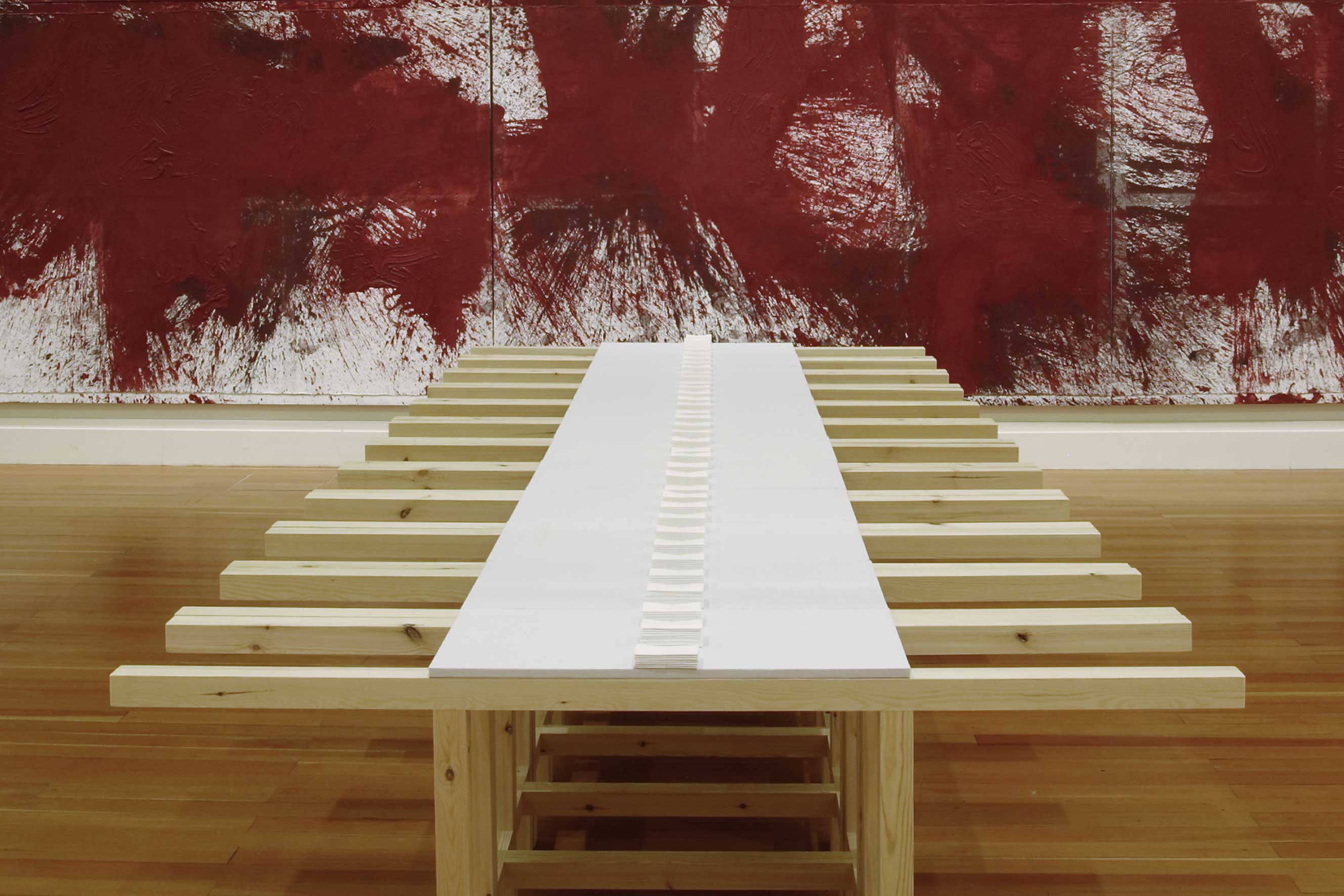Honoring Hermann Nitsch with a representative exhibition at the Nationalgalerie in Berlin has been a long-held wish. With its 18 rooms, the Martin Gropius Building offers a good architectural basis for presenting the artist's great work.
Hermann Nitsch (born in Lower Austria in 1938) has created a versatile and uncompromising work, it goes beyond the canon of the usual understanding of art and the critical and highly fruitful debate about Nitsch's painting has always taken place in connection with the Orgies-Mysteries Theater (OMTheater). . A utopian theater project that he has been performing since the early 1960s and is still the basis of his oeuvre, which is based on a total work of art, the painting action and the action of the OMTheatre are mutually dependent.
The first experimental action took place in Vienna in December 1962 and lasted around 30 minutes. A man was chained to the wall, as if crucified. He was covered with a white robe and Nitsch poured blood over the chained man's face. The blood dripped onto the robe. The way in which paint (or blood) was applied to a base, free-flowing paint from top to bottom, is a method that Nitsch used to create numerous “pouring paintings” in the following years.
He also uses this method of letting things flow and incorporating chance into the pictures that he works on with a broom and brush. This attitude arises from Tachism and the entire “objectless” art of post-war modernism, in whose tradition Nitsch has always been involved.
His theatrical performances simultaneously became more complex and sophisticated over the years, lambs and bulls hung on crosses are gutted, music and various materials are added. Potentially there are no limits; The actions now take place in large halls or in Prinzendorf Castle, where Nitsch has lived and worked since 1971.
